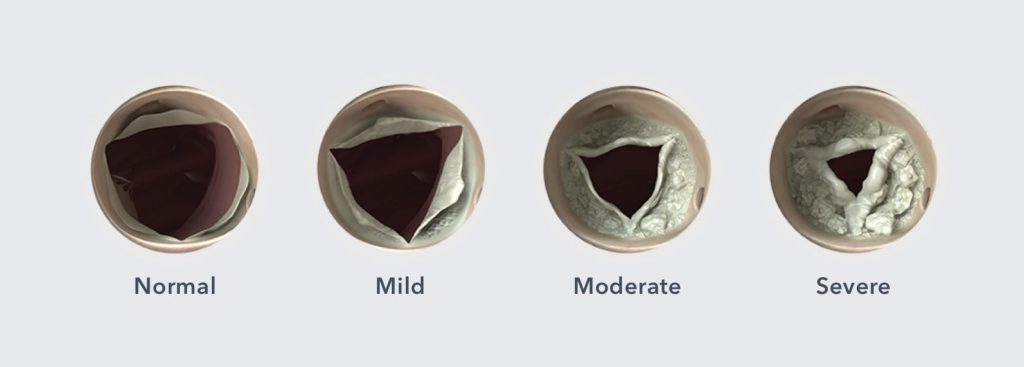What is Aortic Stenosis?
Aortic Stenosis (AS) is a common condition often found in elderly patients1. It has been suggested that 1 in 8 patients over the age of 75 may have the condition2.
Aortic stenosis is the narrowing of the aortic valve. Most commonly in elderly patients, aortic stenosis is caused by, “gradual and progressive build-up of calcification on the aortic leaflets over many years, ultimately leading to such significant restriction of the valve leaflets,” explains Interventional Cardiologist Dr Johnathan White. He further outlines the other causes of aortic stenosis, including genital defects and rhematic fever.
Aortic stenosis can occur when the valves within the aortic valve stiffen due to calcification of the leaflets, which may restrict the cardiac output from the left ventricle. This calcification leads to thickening of the left ventricle and can increase the pressures within the left atrium. It should be noted that many patients do not present with symptoms of AS until the very late stages of the disease due to the long latent period associated with AS3.
Aortic stenosis is a serious condition that has a significant effect on the mortality of these patients. Up to 50 percent of patients diagnosed with symptoms of AS will die within an average of two years unless their aortic valve is replaced4.
Pathophysiology
The increased pressure load imposed by aortic stenosis results in compensatory hypertrophy of the left ventricle (LV). With time, the ventricle can no longer compensate, causing secondary LV cavity enlargement, reduced ejection fraction (EF) and decreased cardiac output. The result is an increase in exertional syncope, exertional angina and breathlessness over time5.

The severity of aortic stenosis is determined by the calcification of the aortic valve leaflets
The Incidence and Prevalence of Aortic Stenosis
Interventional Cardiologist and Associate Professor Gerald Wilkins highlights in the below video the prevalence of aortic stenosis in the ageing community in New Zealand. “Aortic stenosis insidiously creeps up on people… it’s a condition where you end up with something wearing out because you got older.”
Complications of Untreated Aortic Stenosis
Aortic stenosis can present in a very subtle way with patients potentially feeling as they simply have low energy. Therefore, the prognosis of aortic stenosis may be as bad as having cancer. The survival rate considered quite “grim” by Interventional Cardiologist, Dr Sanjeevan Pasupati in the below video. “If you don’t treat it and you have symptoms originating, about 50% will be dead in about a 1-1.5 years, and pretty much all will die within about 3 years time.”
Learn about the symptoms of aortic stenosis here.
Patient Disclaimer: All content on the Hope For Hearts site is created and published online for general information purposes only. It is not intended to be a substitute for professional medical advice and should not be relied on as health or personal advice. Please see your doctor if you have any questions or concerns.
Reference
- American Heart Association
- J AM Coll Cardiol 2013- Sept 10;62 (11) 1002-12 Osnabrugge RL
- American Heart Association
- Healio - Learn The Heart
- MSD Manual
